To install a screen on a door, first measure the dimensions of the door frame. Then, choose a screen that fits the measurements, attach it to the frame using a screen spline and a spline roller, and trim any excess screen material.
Benefits Of Screen Doors
Screen doors offer a range of benefits that make them a popular choice for homeowners. Not only do screen doors provide fresh air circulation, but they also serve as a barrier against insects and pests. Additionally, they enhance security and privacy, giving you peace of mind. Let’s take a closer look at each of these benefits:
Provides fresh air circulation
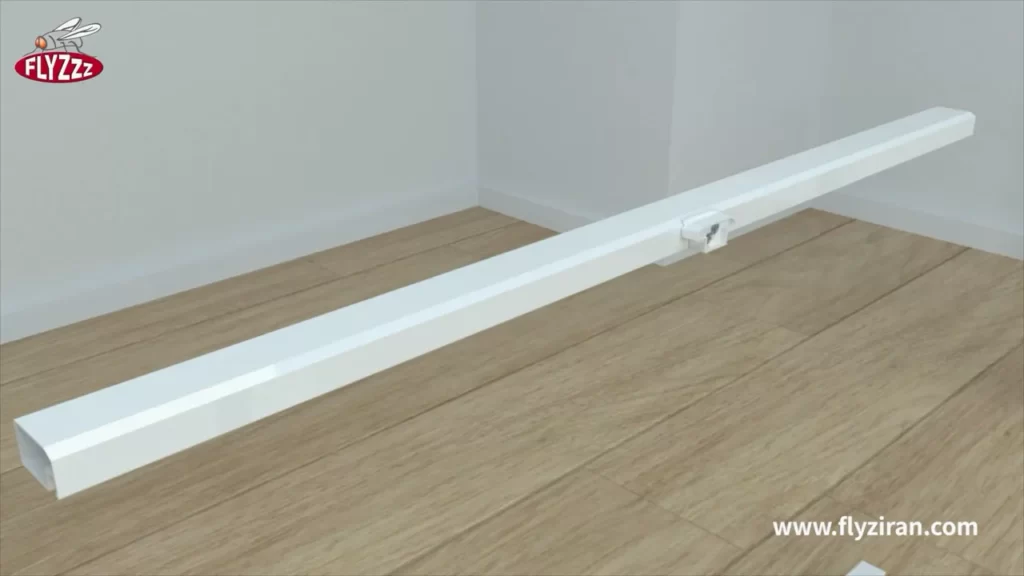
One of the primary advantages of screen doors is their ability to provide fresh air circulation. When you install a screen door, it allows you to open your main door while keeping the screen door closed. This allows a refreshing breeze to flow through your home without compromising your security or privacy. By allowing fresh air into your living spaces, you can create a healthier and more comfortable environment for you and your family.
Keeps insects and pests out
Say goodbye to annoying flies, mosquitos, and other unwanted insects with the help of a screen door. The mesh screen acts as a barrier, preventing these pests from entering your home while still allowing airflow. Whether you’re enjoying a summer barbecue or simply leaving your door open on a pleasant day, a screen door keeps bugs outside and ensures that your indoor spaces remain pest-free. No more swatting and chasing after unwelcome visitors!
Enhances security and privacy
In addition to promoting ventilation and keeping pests at bay, screen doors also enhance security and privacy in your home. With a sturdy screen door installed, you can safely open your main door and interact with visitors without compromising your security. The thick and durable mesh acts as a barrier, preventing unwanted individuals from easily accessing your home. Moreover, screen doors provide an additional layer of privacy by obstructing the view into your home, giving you a sense of seclusion and tranquility.
Overall, the benefits of screen doors cannot be overstated. From improving air circulation and keeping insects out to enhancing security and privacy, these functional additions offer both practical and aesthetic advantages for homeowners. So why not consider installing a screen door today and enjoy the numerous benefits it brings to your home?
Preparing For Installation
Installing a screen on your door not only enhances the beauty of your home but also provides protection against insects and allows fresh air to circulate. To ensure a smooth installation process, it is important to prepare properly. This section will guide you through the necessary steps to prepare for installing a screen on your door.
Required tools and materials
Before you begin, gather the following tools and materials:
| Tools | Materials |
|---|---|
| Tape measureUtility knifeScissorsStaple gunFlat-head screwdriverDrillScrews | Screen material (fiberglass, aluminum, or pet-resistant mesh)Screen frame kitSplineCorner connectors |
Measuring the door frame
Accurate measurements are crucial to ensure a perfect fit for your screen. Follow these steps to measure your door frame:
- Start by measuring the width and height of the door opening. Use a tape measure to get precise measurements.
- Measure the thickness of the door frame. This will help you determine the size of the corner connectors you will need.
- Take note of any obstructions, such as door handles or hinges, that might affect the installation. Measure and mark their positions on the door frame.
Choosing the right screen material
The choice of screen material depends on your specific needs and preferences. Consider the following factors when choosing the right screen material:
- Fiberglass: This is a popular option due to its durability, flexibility, and affordability. It provides excellent visibility and airflow while keeping insects out. Fiberglass screens are available in various colors.
- Aluminum: Aluminum screens are stronger than fiberglass and resist rust and corrosion. They are ideal for areas where pets or kids might come into contact with the screen frequently.
- Pet-resistant mesh: If you have pets that tend to scratch or chew on screens, consider pet-resistant mesh. It is made from tough materials that can withstand pet damage.
Tip: Consider the climate and environmental conditions in your area when choosing the screen material. Some materials may be better suited for high-temperature or high-moisture areas.
By gathering the necessary tools and materials, measuring the door frame accurately, and choosing the right screen material, you are now ready to move on to the next step of installing a screen on your door. In the next section, we will guide you through the installation process, ensuring a successful and hassle-free project.
Removing The Existing Door Hardware
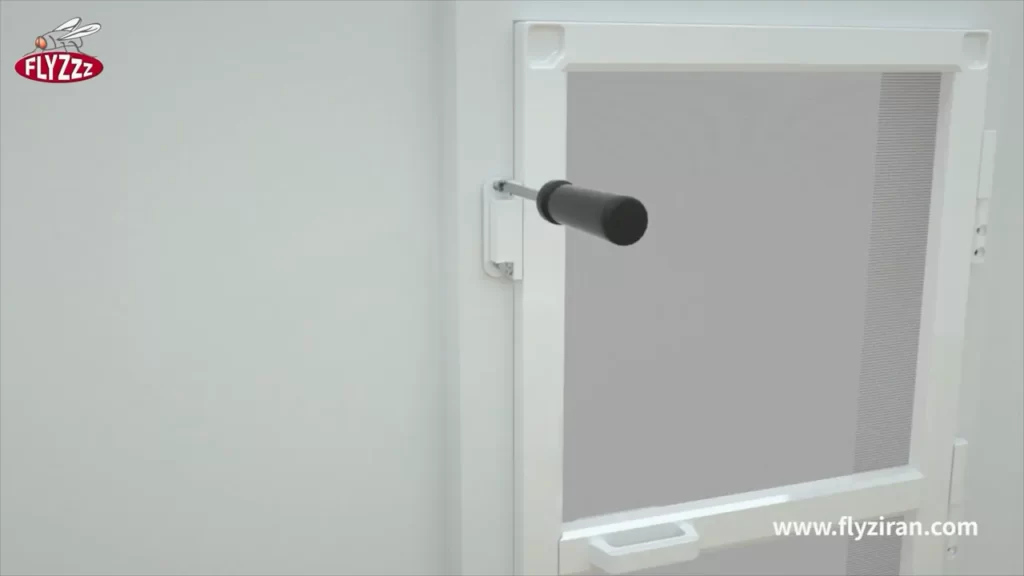
When it comes to installing a screen on a door, it’s important to start by removing the existing door hardware. This ensures a clean and smooth installation process. In this section, we will walk you through the step-by-step process of removing the door handle and lock, as well as taking off the hinges, to prepare your door for the installation of a screen. Let’s get started!
Removing Door Handle and Lock
The first step in removing the door hardware is to focus on the door handle and lock. Follow these simple steps to get it done:
- Start by unscrewing the screws located on the interior side of the door handle. Use a screwdriver to loosen and remove these screws.
- Gently pull the door handle away from the door, taking care not to damage the surrounding area.
- Next, locate the lock mechanism on the edge of the door. Again, use a screwdriver to remove the screws that secure the lock in place.
- Once the screws are removed, carefully slide the lock mechanism out of the door, taking note of any additional screws or connections that may need to be detached.
Taking off the Hinges
Next, it’s time to tackle the hinges. Follow these steps to safely remove them:
- Start by supporting the weight of the door to prevent it from falling when the hinges are removed.
- Locate the screws that secure the hinges to the doorframe.
- Using a screwdriver, loosen and remove these screws one by one.
- Once the screws are removed, carefully lift the door off the hinges and set it aside.
With the door handle, lock, and hinges removed, you have successfully completed the process of removing the existing door hardware. Now, your door is ready for the installation of a screen. In the next section, we will guide you through the steps of installing a screen on your door.
Measuring And Cutting The Screen Material
Accurate measurement and precise cutting of screen material are crucial steps when installing a screen on your door. These steps ensure a perfect fit and prevent any gaps or loose areas that bugs or debris can enter through. In this section, we will guide you through the process of measuring your door frame accurately and cutting the screen material to size.
Accurate measurement of the door frame
Before cutting the screen material, it’s important to measure your door frame accurately. This will help you determine the correct dimensions for the screen and ensure a seamless installation. To measure your door frame, follow these steps:
- Start by measuring the height of the door frame from the top to the bottom. Use a tape measure and record the measurement in inches. Make sure to measure from the inside of the frame for more accurate results.
- Next, measure the width of the door frame from one side to the other. Again, use a tape measure and record the measurement in inches. Remember to measure from the inside of the frame.
Once you have obtained these measurements, you can proceed to cut the screen material to the correct size.
Cutting the screen material to size
Now that you have the accurate measurements of your door frame, it’s time to cut the screen material to size. Follow these steps to ensure a precise cut:
- Lay the screen material on a flat surface, ensuring it is taut and free from any wrinkles or folds.
- Using the measurements you obtained earlier, mark the dimensions on the screen material. Make sure to add a few extra inches to each side to allow for securing the screen to the door frame.
- Once you have marked the dimensions, use a sharp pair of scissors or a utility knife to cut along the lines. Take your time and make clean, straight cuts to achieve the best results.
After cutting the screen material to size, double-check the measurements against your door frame to ensure accuracy. If everything matches up, you are now ready to move on to the next step of the installation process. If there are any discrepancies, make adjustments accordingly to achieve the perfect fit.
By following these steps, you can measure your door frame accurately and cut the screen material to size effectively. These precise measurements and cuts will result in a well-fitted screen that not only enhances the aesthetics of your door but also keeps insects and debris at bay.
Attaching The Screen To The Door Frame
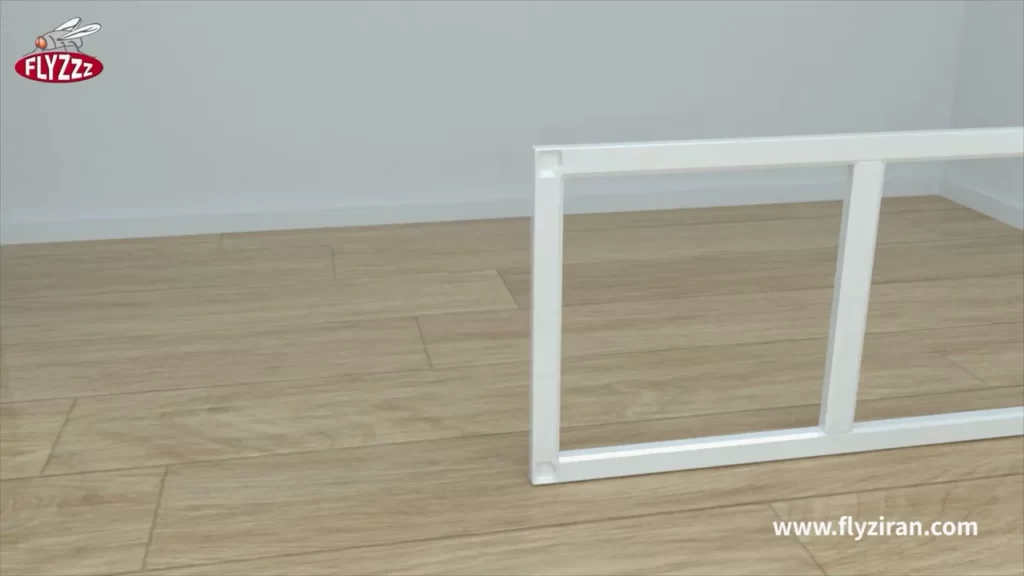
Once you have measured and trimmed the screen to fit your door frame, the next step is to attach it securely. There are two common methods you can use – adhesive or staples. Whichever method you choose, the goal is to ensure a neat and secure installation that will withstand normal wear and tear.
Using adhesive
One way to attach the screen to the door frame is by using adhesive. This method is great if you prefer a clean and seamless look without any visible staples. Here’s how you can do it:
- Clean the door frame thoroughly, removing any dust, dirt, or debris. A clean surface will help the adhesive bond better.
- Apply a thin, even layer of adhesive along the edges of the door frame. Be sure to follow the instructions provided with the adhesive product you choose.
- Carefully press the screen onto the adhesive, starting from one corner and working your way along the frame. Smooth out any wrinkles or bubbles as you go.
- Allow the adhesive to dry completely before closing the door or applying any pressure to the screen.
Ensuring a secure and neat installation with staples
Using staples is another popular method for attaching a screen to a door frame. This method provides a secure hold and is relatively easy to do. Follow these steps:
- Place the screen over the door frame and align it properly. Ensure that the screen is taut without any excess slack.
- Starting from one corner, use a staple gun to secure the screen to the door frame. Place the staples at regular intervals, around 2 to 3 inches apart.
- Continue stapling along each side of the frame, adjusting the tension of the screen as needed to avoid wrinkles or sagging.
- Once all the sides are stapled, trim any excess screen material using a sharp utility knife or scissors. Take care not to cut too close to the staples or the frame.
By following these steps and choosing the method that works best for you, you can ensure a secure and neat installation of the screen on your door frame. Remember to take your time, work carefully, and double-check your measurements to achieve the best results. With the screen properly attached, you can now enjoy fresh air and a bug-free environment inside your home.
Installing The Door Hardware
Installing the Door Hardware One of the essential steps in installing a screen on a door is installing the door hardware. This includes reattaching the door hinges and installing the door handle and lock. Properly completing these tasks ensures that your screen door is secure and functional. In this section, we will guide you through each step, providing clear instructions to help you successfully install the door hardware. Reattaching the Door Hinges The first step in installing the door hardware is reattaching the door hinges. Follow these steps to ensure a proper and secure attachment: 1. Begin by removing the hinge pins from the door frame. Use a hammer and a flat-head screwdriver to gently tap the pins upward until they are loose enough to pull out. 2. Next, align the hinge plates on the screen door with the hinge recesses on the door frame. Make sure the hinge plates are oriented correctly, with the rounded edges facing upward. 3. Once aligned, insert the hinge pins back into the hinge holes. Use a hammer to tap the pins back in until they are flush with the door frame. Installing the Door Handle and Lock After reattaching the door hinges, it’s time to install the door handle and lock. This step requires careful attention to ensure proper functionality and security. Here’s how you can do it: 1. Begin by positioning the door handle on the screen door. Make sure it is aligned vertically and at a comfortable height for easy access. 2. Once positioned, mark the screw holes on the screen door using a pencil or marker. This will serve as a guide for drilling. 3. Use an appropriate drill bit to create pilot holes at the marked positions. Make sure the drill bit is slightly smaller than the screws provided with the door handle. 4. After drilling the pilot holes, attach the door handle to the screen door using the screws provided. Tighten them securely but be careful not to overtighten and strip the holes. 5. Finally, install the door lock mechanism following the manufacturer’s instructions. Make sure the lock engages smoothly and securely when the door is closed. By following these steps, you can confidently install the door hardware for your screen door. Reattaching the door hinges ensures proper alignment and functionality, while installing the door handle and lock provides security and convenience. With these tasks completed, your screen door will be ready to keep your home well-ventilated and protected from unwanted visitors.
Regular Cleaning And Inspection
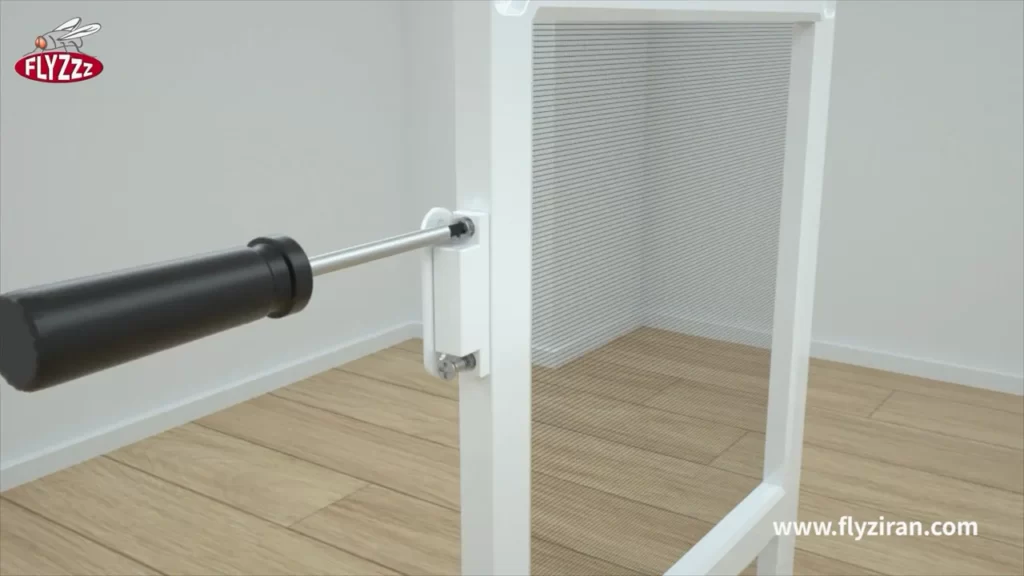
Regular cleaning and inspection of your screen door is essential to keep it functioning optimally and ensure it lasts for a long time. By removing dirt and debris periodically and checking for any damages or tears, you can prevent problems and maintain the overall appearance of your screen door. In this section, we will discuss how to remove dirt and debris effectively and how to inspect your screen door for any damages or tears.
Removing dirt and debris
To begin with, it is important to remove dirt and debris regularly to prevent any clogs or obstructions in your screen door. Here are some steps to follow:
- Step 1: Start by clearing the area around the screen door to ensure easy access.
- Step 2: Use a soft brush or a vacuum cleaner with a brush attachment to gently remove loose dirt and debris from the screen.
- Step 3: For stubborn dirt or stains, create a mixture of mild detergent and warm water.
- Step 4: Dip a soft cloth or sponge into the detergent mixture and gently scrub the screen, focusing on the areas with the most dirt or stains.
- Step 5: Rinse the screen with clean water to remove the detergent residue, and then let it air dry completely.
By regularly removing dirt and debris, you can maintain the cleanliness and functionality of your screen door.
Checking for any damages or tears
In addition to cleaning, it is crucial to inspect your screen door for any damages or tears. Here’s how:
- Step 1: Carefully examine the entire screen fabric for any visible damages or tears.
- Step 2: Pay close attention to the corners and edges, as these areas are more prone to wear and tear.
- Step 3: If you notice any damages or tears, use a screen repair kit or replace the damaged portion of the screen fabric.
- Step 4: Ensure that the screen fabric is securely attached to the door frame and there are no loose or protruding edges.
- Step 5: Check the door frame for any signs of rust, rot, or structural damage, and address any issues promptly.
Regular inspection will help you identify any potential problems and allow you to take timely action to prevent further damage or costly repairs.
In conclusion, regular cleaning and inspection play a vital role in the maintenance of your screen door. By removing dirt and debris regularly and checking for damages or tears, you can extend the lifespan of your screen door and ensure its efficient operation. Make sure to follow the steps mentioned above to keep your screen door clean, functional, and visually appealing for years to come.
Repairing Or Replacing A Damaged Screen
Repairing or Replacing a Damaged Screen If you have a damaged screen on your door, don’t worry! It’s a common problem that can be easily fixed. Whether you have small holes or tears in your screen or need to replace the entire panel, I’ll walk you through the steps to get your door looking good as new. In this section, we’ll cover two methods: patching small holes or tears and replacing the entire screen panel if necessary.
Patching small holes or tears
Patching small holes or tears in your screen is a quick and efficient way to restore its functionality without having to replace the entire panel. Here are the steps to follow:
- Start by cleaning the damaged area with a mild detergent and water. This will ensure that the patch adheres properly.
- Once the area is clean and dry, measure the size of the hole or tear, allowing some extra space around it.
- Next, cut a patch from a screen repair kit or use a piece of screen material that matches your door. Ensure that the patch is slightly larger than the damaged area.
- Apply a small amount of adhesive or clear nail polish around the edges of the hole or tear to prevent fraying.
- Carefully place the patch over the damaged area, making sure it aligns properly.
- Press down firmly on the patch to secure it in place.
- Allow the adhesive to dry completely before testing the repaired area.
Replacing an entire screen panel if necessary
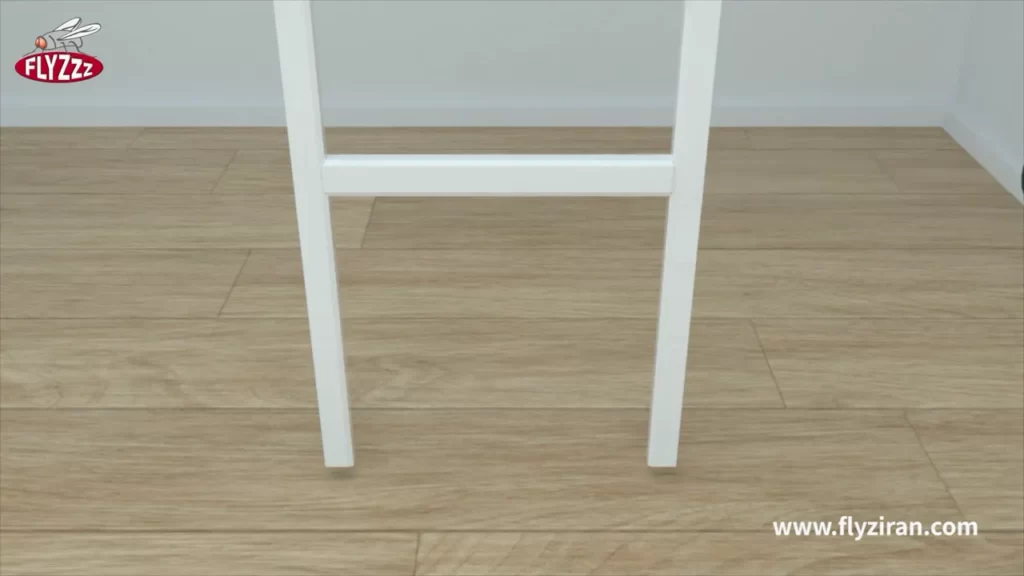
In some cases, the damage to your screen may be too extensive for patching to be an effective solution. If that’s the case, you’ll need to replace the entire screen panel. Follow these steps:
- Begin by removing the damaged screen panel from the door frame. This can usually be done by removing screws or clips that hold it in place.
- Measure the dimensions of the opening to determine the size of the replacement screen.
- Using a utility knife or scissors, cut a new screen panel that matches the measurements you took.
- Align the new screen panel with the door frame, ensuring that it overlaps on all sides.
- Secure the new screen panel in place using the appropriate screws or clips.
- Trim any excess screen material using a utility knife or scissors.
- Finally, test the newly installed screen panel by opening and closing the door to ensure it fits properly and functions smoothly.
By following these instructions, you can easily repair or replace a damaged screen on your door. Whether you choose to patch small holes or tears or replace the entire panel, you’ll have your door looking and functioning like new in no time. Remember to take measurements accurately, use the right tools and materials, and follow each step carefully for the best results.
Seasonal Maintenance
Proper maintenance is essential to ensure the longevity and functionality of your door screen, and it becomes even more crucial during seasonal changes. With each season, your screen may require different adjustments to handle various weather conditions and provide the desired ventilation.
Handling winter conditions
During winter, the cold temperatures can potentially damage your screen and compromise its effectiveness. To prepare your screen for the winter season, follow these steps:
- Remove the screen: Start by carefully removing the screen from the door. Lay it on a flat surface to assess its condition and rectify any prior damage.
- Inspect for tears or holes: Thoroughly examine the screen for any tears or holes caused by wear and tear. In case you find any damage, it’s important to repair or replace the affected areas.
- Apply weatherstripping: Apply weatherstripping around the edges of the screen to prevent cold air from seeping through. This helps in maintaining a consistent temperature inside your home and reducing heating costs.
- Store the screen: Once you have made the necessary repairs and applied weatherstripping, store the screen in a dry and safe place for the duration of the winter season. This will protect it from further damage and ensure its longevity.
Adjusting the screen for summer ventilation
As summer approaches, it’s time to adjust your screen to accommodate the warm weather and maximize ventilation. Follow these steps to optimize your screen for summer:
- Reinstall the screen: Carefully reinstall the screen on your door, making sure it fits securely and snugly.
- Clean the screen: Before using it, clean the screen to remove any dust or debris that may have accumulated during storage. This can be done using a soft brush or a vacuum cleaner with a soft brush attachment.
- Adjust the screen position: Depending on your preferences, you can adjust the position of the screen to allow for maximum airflow. This might involve adjusting the height or angle to optimize ventilation while maintaining security.
- Add insect repellent: To keep pesky insects out while enjoying a cool breeze, consider applying insect repellent to the screen or installing a separate mesh specifically designed to keep insects at bay.
By following these steps for seasonal maintenance, you can ensure that your door screen performs optimally throughout the year. Remember to inspect your screen regularly, make necessary repairs, and adjust as needed to enjoy the benefits of a well-ventilated and secure home.
Frequently Asked Questions For How To Install Screen On Door
How Do You Attach A Screen To A Door?
To attach a screen to a door, follow these steps: 1. Measure the door frame to determine the screen size. 2. Cut the screen material to fit the frame, leaving extra for attaching. 3. Attach the screen to the frame using adhesive or staples.
4. Trim any excess screen material. 5. Install the screen frame onto the door using screws or clips.
How Do You Put A Screen Back In A Door Frame?
To put a screen back in a door frame, follow these steps: 1. Hold the screen at a slight angle and fit the top edge into the top track of the frame. 2. Push the bottom edge into the bottom track and align it properly.
3. Use a spline roller tool to press the screen into the grooves around the frame. 4. Trim off any excess screen material. 5. Check for proper fit and make any necessary adjustments.
Can You Add A Screen Door To A Regular Door?
Yes, you can easily add a screen door to a regular door. It provides ventilation and keeps bugs out.
How Do You Install Screen Mesh On A Door?
To install screen mesh on a door, follow these steps: 1. Measure and cut the mesh to fit the door frame. 2. Remove the door from the frame if necessary. 3. Attach the mesh to the frame using staples or a spline tool.
4. Reinstall the door and ensure that the mesh is securely in place. 5. Trim any excess mesh for a neater finish.
How Do You Install A Screen On A Door?
Installing a screen on a door is a straightforward process. Follow these steps: Measure the door, purchase a screen kit, assemble the frame, attach the screen, and secure it to the door frame.
What Tools Do I Need To Install A Screen On A Door?
To install a screen on a door, you’ll need a few tools, including a tape measure, utility knife, screwdriver, staple gun, and a hacksaw. Gather these tools before starting the installation process.
Conclusion
Installing a screen on your door is a simple and effective way to keep bugs out while allowing fresh air to circulate in your home. By following the step-by-step instructions in this blog post, you can easily install a screen on your door without any hassle.
With just a few tools and some basic DIY skills, you’ll have a functional screen door in no time. Enjoy bug-free summers and a more comfortable living space with this straightforward installation process.
